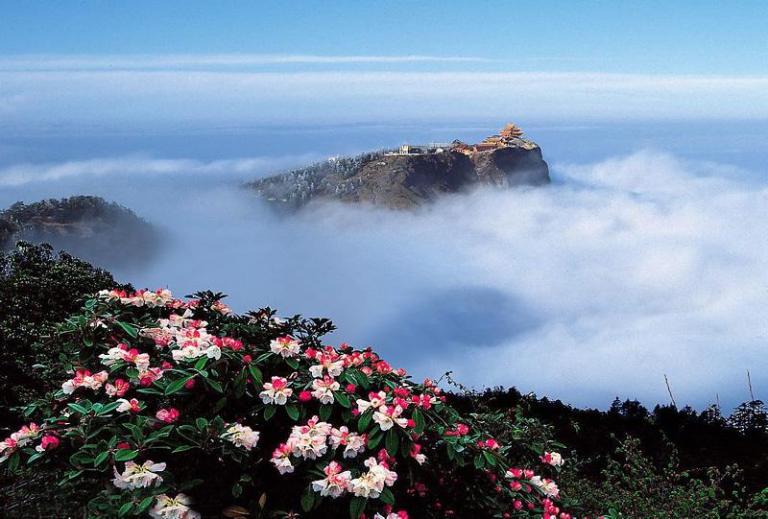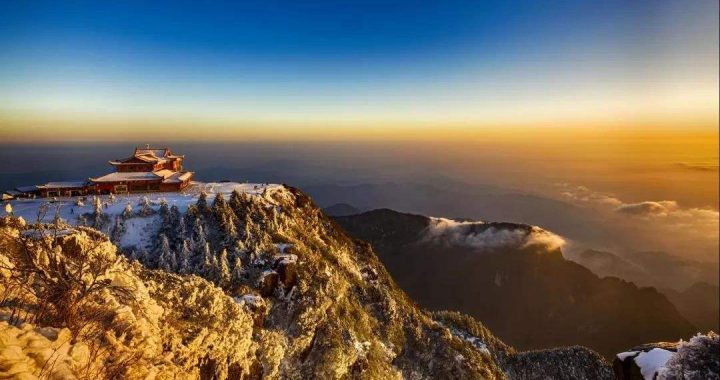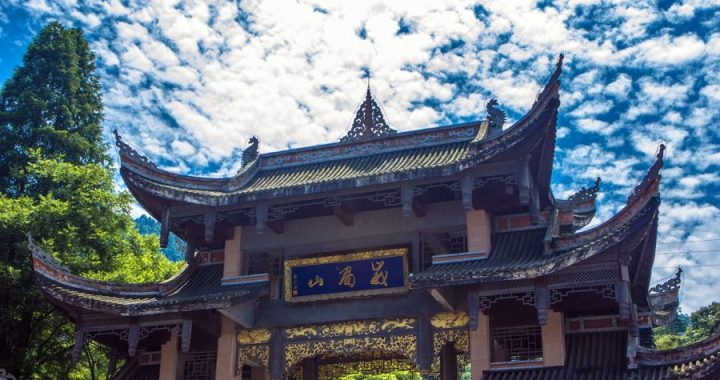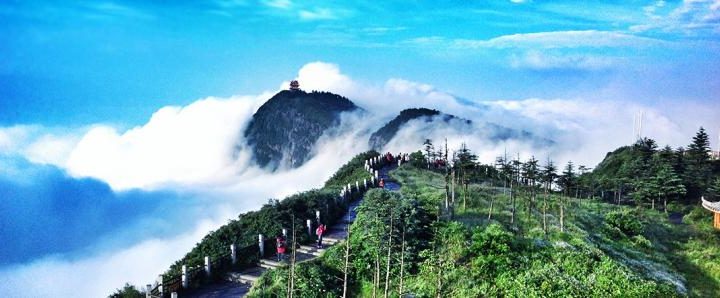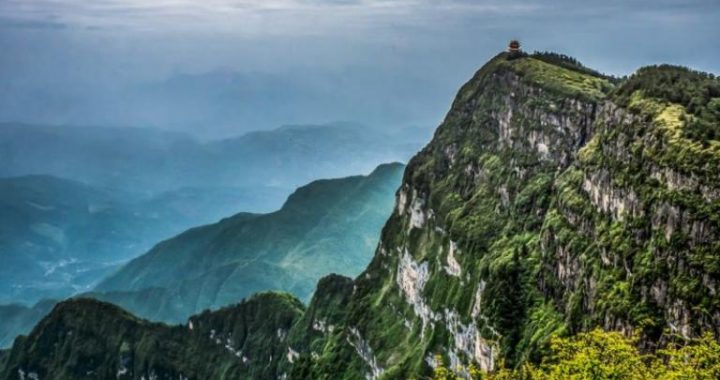Emei Mount is vevry beautiful
3 min readMount Emei is one of the”four famous Buddhist mountains”in China.lt lies about168 kilometers from Chengdu,the capital of Sichuan Province.The whole mountain has integrated the natural and humanistic landscape.It occupies a special geographic location,and is known for its majestic nature sceneries,typical topographic features,and well-preserved ecological environment.The natural sceneries are mainly the Golden Summit,Elephant Bath Pond,Cave of Nine Old Hole,and the Hongchunping Mountain Glen while the humanistic landscapes are Wannian Monastery,Baoguo Monastery and Fuhu Monastery.Wannian Monastery is the most famous monastery among them.Besides the scenic spots of the holy mountain,it is important to obtain some information about the spread of Buddhism in Mount Emei.
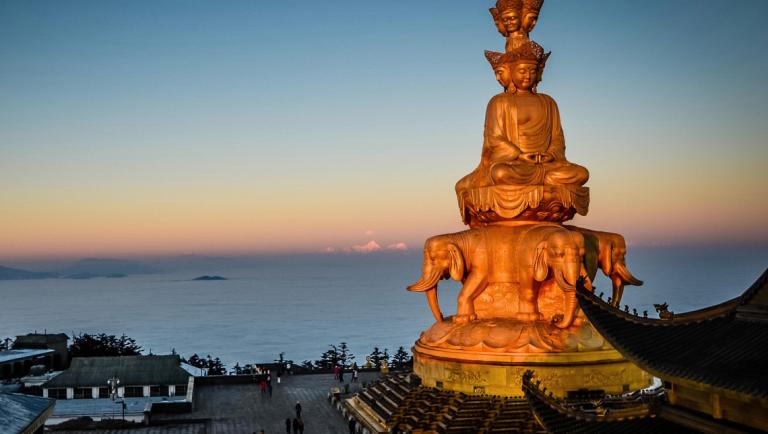
It is almost two thousand years since Buddhism was introduced from India Its monasteries cover everywhere in China except a few Daoist mountains like Mount Qingcheng.It is commonly said that Buddhist monks have occupied much more wellknown mountains for their Buddhist purpose than Daoist priests.However,most of Buddhist followers believe that only the four famous mountains in China are the Buddhist holy places.They are Mount Emei in Sichuan,Mount Putuo in Zhejiang,Mount Wutai in Shanxi and Mount Jiuhua in Anhui.Each mountain is dedicated to different Bodhisattvas(in Chinese Bodhisattva usually refers to pusa).Each Bodhisattva has his own ritual place to salvage suffering creatures.Wenshu performs the Buddhist rites in Mount Wutai,and Guanyin in Mount Putuo.Dizang is said to have gained enlightenment in Mount Jiuhua.Puxian is regarded as one of the four well-known Bodhisattvas of China’s Buddhism.Legend has it that Mount Emei in Sichuan is the place where he performs the Buddhist rites.
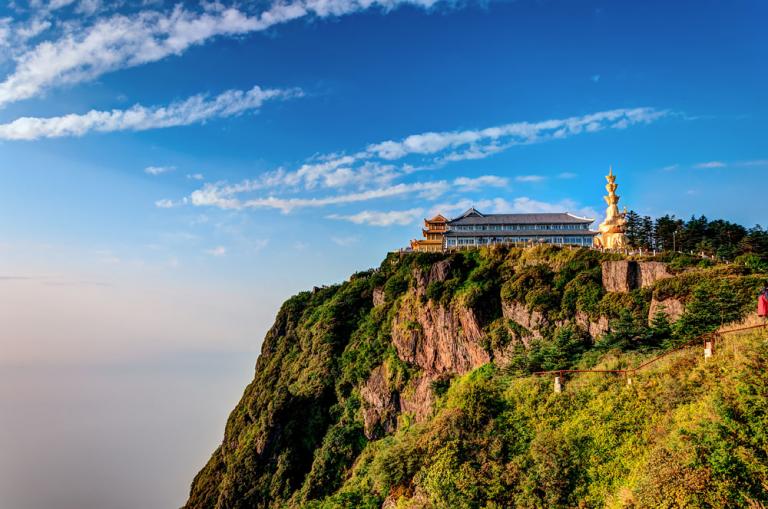
Wannian Monsastery or the Ten-Thousand-Year Temple is the first of its kind built on Mount Emei.It was called Puxian when first built in the Eastern Jin Dynasty(317-420),renamed Baishui in the Tang(618-907),and the Baishui Puxian in the Song(960-1279).In 1601,it took its present name.With Luotuo(Camel)Ridge behind and Bailong(White Dragon)River in front,the temple is shrouded in red leaves and fragrant osmanthus in autumn.The water is limpid and frogs croak like playing lute.The White Dragon River and Autumn Breeze at the Ten-Thousand-Year Temple is one of the 10 scenes of Mount Emei.Within the Beamless Hall of the Ten-Thousand-Year Temple,a hall with outstanding architectural features,towers a bronze statue of Samantabhadra standing on a white elephant Cast in 980 in the Song Dynasty,it is 7.85 meters high,weighs 62 tons and is one of the important cultural relics of China.
The Golden Summit,3,077 meters above sea level,offers four wonderful views:sunrise,a sea of clouds,”Buddha’s light”,and the evening glow .In 1602,four bronze halls were cast in Chang’an on the current site of Xi’an.One of them was moved up to the top of the mountain from which the Golden Summit was named.The hall was 8 meters high and 5 meters wide.The mountain itselfis shrouded in the everhanging cloud offog.Fir trees,pines and cedars clothe the slopes;lofty crags,cloudkissing precipices,butterflies and azaleas together form a nature reserve of sorts.At the Golden Summit one stands above the fog and gets a beautiful view,especially in the early morning when mountaintops are bathed in the radiance of the rising sun.Late in the tare afternoon the viewers may see the Magic Light,which appears as a multicolored ring oflight in the sky with the shadow of the viewer moves.This light phenomenon was traditionally known as the Emei Buddhist Glory.Actually it is a rainbow ring,produced by refraction of water particles that attach themselves to a erson’ps shadow in a cloudbank below the summit.
Baogou Monastery or the Temple of Serving the Country,which originally constructed in the 6 th century but entirely rebuilt in the 17th,is the gate to Mount Emei.It was named Huizhong Hall at the beginning of the Ming Dynasty.The Qing Dynasty Emperor Kangxi gave it the present name Baoguo meaningworthy service to the country.It is the site of important Buddhist activities.Tourists usually start their ascent ofthe mountain at Baoguo Monastery.Both Baoguo and Fuhu monasteries were enlarged in the Qing Dynasty and now become the largest ones in the mountain.
